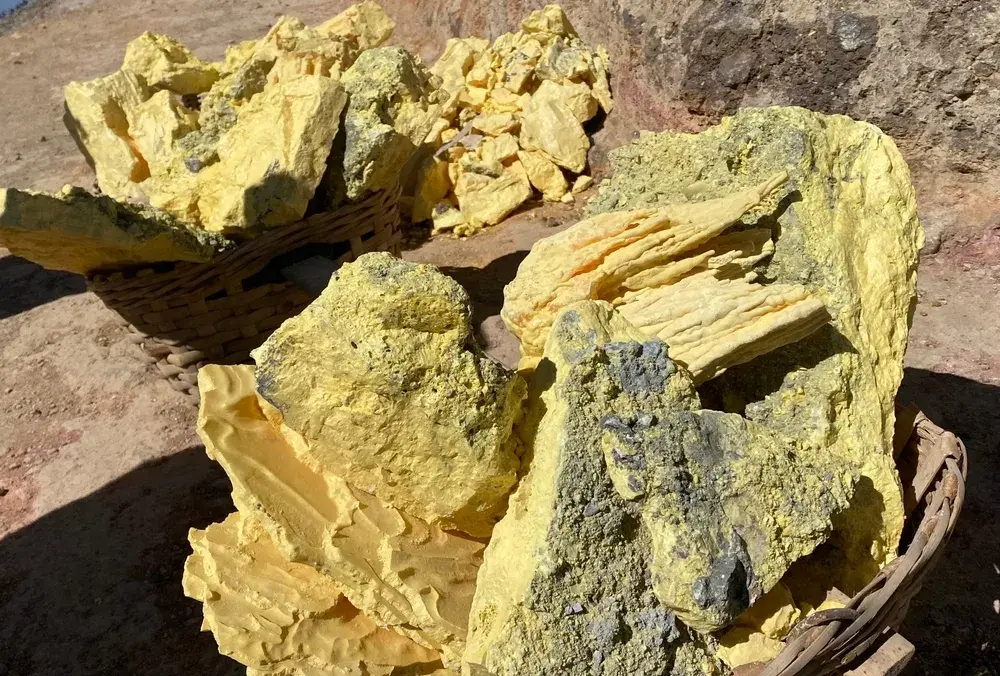What Is Sulfur?
Sulfur is a pure, nonmetallic element found in the Earth's crust and the third most abundant mineral in the human body.
Pure sulfur has a pale yellow color and is either odorless or may have a faint smell resembling rotten eggs. Aroma aside, sulfur has a wide range of skincare benefits. In fact, ancient civilizations used sulfur for hundreds of years for various purposes, including to soothe skincare conditions like acne.
Today, strict regulations uphold sulfur's safety and effectiveness (and modern formulas sidestep the smell factor, too!). The U.S. Food and Drug Administration deems sulfur generally recognized as safe and effective for over-the-counter acne treatments in 3% to 10% concentrations.
Sulfur Formulas
In skincare, sulfur is primarily found in two forms:
Precipitated Sulfur
Precipitated sulfur is the most common form of sulfur in dermatology to treat skin conditions like acne. It's produced through a distillation process that turns sulfur into a fine white powder. The smaller particle size allows for improved skin surface penetration, which supports its beneficial effects.
Colloidal Sulfur
These finely milled sulfur particles are considered the most active form of sulfur. You can find colloidal sulfur in lotions, creams, masks, gels and spot treatments formulated to improve the appearance of acne.
What Are the Uses of Sulfur?
So, what is sulfur used for? Sulfur's long and varied history, from hot sulfur springs to contemporary dermatology, demonstrates its enduring efficacy. Here's how sulfur can benefit your skincare routine.
Treats Acne
Sulfur dries out dead surface skin and absorbs excess oil, helping keep pores clear. It also inhibits the growth of bacteria that cause acne. As a keratolytic, sulfur helps reduce pimple swelling and redness, increase moisture in the skin and promote dead surface skin shedding for a smoother, clearer, healthier-looking complexion.
Controls Oil
Regulating oil absorption is another of sulfur's strengths, helping you maintain a clear, shine-free complexion. If you're constantly reaching for oil blotting sheets, you might want to try incorporating sulfur into your routine!
Where Does Sulfur Come From?
Sulfur is a fascinating element whose origins are deeply entwined with the Earth's natural processes.
You can find sulfur bountifully tucked away in nature's most dramatic landscapes, including volcanoes and hot springs. Sulfur gases escape from deep within the Earth and crystallize upon hitting cooler air. These natural deposits aren't just stunning — they're also some of the purest forms of sulfur, which have been harvested for their healing properties for ages.
How To Incorporate Sulfur Into Your Skincare Routine
Here's how to add sulfur to your skincare routine.
Choose the Right Product
Sulfur is available in various forms, including sulfur cream, sulfur soap and sulfur face wash. If you have acne-prone skin, try a sulfur-based cleanser or mask to help reduce sebum and clear pores. Or you can opt for a spot treatment like Neutrogena® Stubborn Acne™ Spot Drying Lotion to target blemishes directly with 10% sulfur. Ask your dermatologist for recommendations.
Apply as Directed
Recommended frequency depends on the product type, so apply sulfur-based products according to the instructions on the label. In general, start with once a day or every other day, and gradually increase to two to three times a day as your skin adjusts. Try a patch test before applying any new product to large areas of skin.
Follow With Moisturizer
Follow up sulfur treatment with a non-comedogenic moisturizer to maintain healthy hydration without blocking pores. If you have sensitive skin, look for moisturizers with soothing ingredients like hyaluronic acid and glycerin (try Neutrogena® Hydro Boost Water Gel with Hyaluronic Acid!).
Combine With Care
Avoid using sulfur-based skincare formulas at the same time of day as salicylic acid, benzoyl peroxide or retinoids unless recommended by a dermatologist. These combinations can increase your risk of skin dryness and irritation.
Finish With Sunscreen
Sulfur can make your skin more sun-sensitive. To protect against increased risk of sun damage and sunburn, apply broad-spectrum sunscreen with SPF 30 or higher every morning. Follow other sun-safety practices too, like wearing a broad-brimmed hat or sunglasses.





